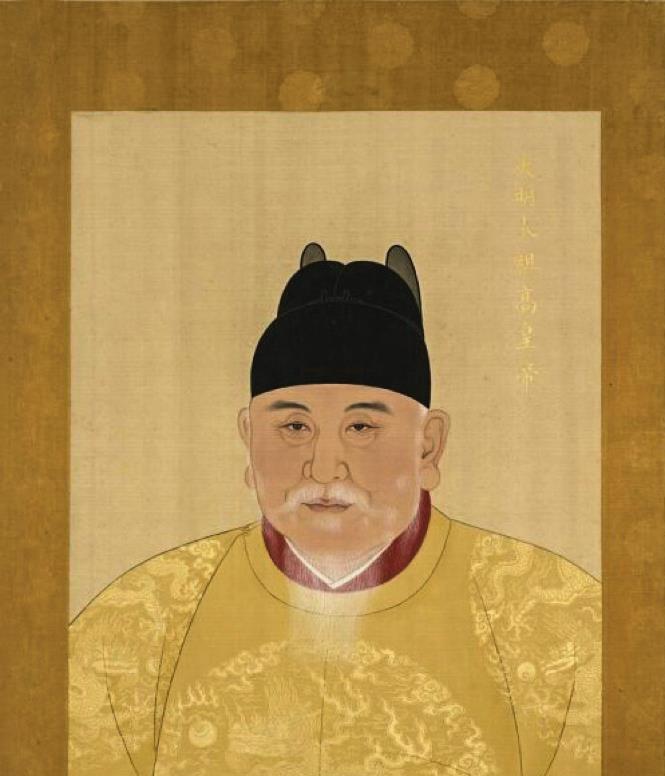The clan system of the Ming Dynasty was laid by the Ming Emperor Zhu Yuanzhang in the early years of Hongwu, and the Ming Chengzu Zhu Di was perfected in the last year of Yongle, which is a very special clan system in Chinese history, it is not like the Han and Jin Dynasties dividing the land and dividing the country, nor like the Tang and Song Dynasties.
The kings of the Ming Dynasty generally refer specifically to the princes who are in various places, the Ming Dynasty clans, the lords do not come to the people, the food lu does not govern, the clan can not participate in politics, nor can they participate in the business of the four people of the peasants, farmers, industry and commerce, but every year they can get a large amount of Feng Lu
。 By the end of the Ming Dynasty, these clans headed by the king of the clan had brought huge financial pressure to the country, so how many clan kings were there at the end of the Ming Dynasty? How much does it cost to raise them each year?

It is worth mentioning that the number of kings of the late Ming Dynasty was actually not much, Zhu Yuanzhang had a total of 25 clan kings, and in the Chongzhen period, plus the clan kings who were divided by other emperors, and then in addition to the absolute heirs, the withdrawal of the clan and those who were welcomed into the palace as emperors, the Ming Dynasty only had 27 clan kings. Ming Taizu stipulated that the prince should be 10,000 stones per year, although there were many, but just by looking at the quantity, the whole country only needed to spend more than 200,000 stones of grain, so where did the financial burden of the ming dynasty come from?
In fact, the biggest expense was not on these princes, but on the following county kings, zhenguo generals and other clan titles.
The Ming Dynasty divided the clan into eight levels, the highest rank is the prince, the lowest position is the Fengguo lieutenant, each clan eldest son can inherit the title, and the second son has to cut the first grade of the knighthood, but when it comes to the lowest level of the Fengguo lieutenant, all sons can inherit the title of Fengguo lieutenant, that is to say, as long as it is the Ming Dynasty's clan, the lowest also has the title of Fengguo lieutenant. Although they are not high, but they can not stand the number of people, although there were a total of 58 people in the Ming Dynasty during the Zhu Yuanzhang period, the growth rate of the population was explosive, according to the records of the "Records of the Ming Shen Sect",
Twenty-three years of the Wanli calendar
(1595), the population of the clan had grown to 157,000
According to the "Ming Dynasty Wanli Accounting Records Collation and Research",
In the early years of the Wanli Calendar, the national financial expenditure was more than 18.5 million taels of silver, and the expenditure of the Emperor's clan was as high as 5.5 million taels, accounting for nearly 30 percent.
On the other hand, these clan populations not only eat the state, but also enjoy economic privileges, they do not have to pay taxes, so they wantonly annex land,
The fertile land in Shanxi was basically annexed by the clansmen, and the land in Henan was "half into the domain"
,
The land of each clan king reached tens of thousands of acres.
This also led to a sharp decline in state revenue, according to the "Huangming Jingshiwen Compilation",
"The grain of the two provinces is not enough to supply half of the rice of the clan room"
The taxes of the two provinces of Shanxi and Henan are not even half of the Zongmu Lu rice.
Those most senior feudal kings were kept captive by the state, sitting on tens of thousands of acres of fertile land, and raised themselves white and fat, but there were also many low-ranking Ming Dynasty clans who were not satisfied. Faced with the situation that the fiscal revenue was decreasing, while the financial expenditure of the clan was increasing year by year, the financial pressure of the Ming Dynasty was increasing, so in the middle and late Ming Dynasty, the imperial court no longer paid some of the low-level clans, but these clans could not engage in scholars, farmers, industrialists, and merchants, so many clans could not even eat. In the Zhou Dynasty of Henan, there was a pair of fathers and sons of the low-level clan, in order to be able to eat prison meals, deliberately discussed the government and politics, according to the "Law of Daming", the prince who was going to be imprisoned would not be sentenced to death, and finally their father and son ate prison food as they wished.
In general, the Ming dynasty's clan system was formulated without taking into account population growth, which eventually made this system a social yoke. However, the twenty-seven feudal kings at the end of the Ming Dynasty did not end well, sitting on a large amount of land and wealth, they could not contribute their own strength at the time of national crisis, and eventually most of them became the targets of the rebel army or the Qing army to pursue, not only the property was gone, but even the small life could not be left.